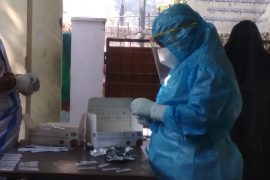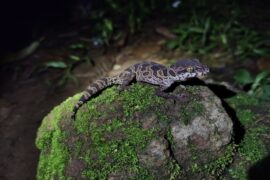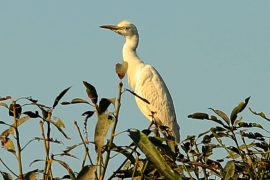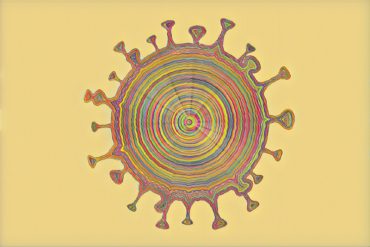Smoking tobacco is injurious to health. Indeed. But did you know a newly discovered variant is also a death trap for insects?
Some researchers were driving down the highway in Western Australia and decided to halt at a truck stop when their eyes befell on a strange tobacco plant. The unusual plant was sticky on the outside with tiny hair-like features. The sticky, velcro-like coat of fine hair looked like “a mass grave for small insects,” reported Mongabay.
[F]lies, gnats, and aphids, which met an untimely death in the tobacco’s fetid liquid armor.
The researcher collected the seeds of this newly found species of tobacco and transported them to the Kew Gardens, London. The seeds were studied and re-cultivated, only to discover that even the second-generation plants displayed their insect-trapping and killing properties. It was rightfully christened as Nicotiana insecticida, a Nicotine plant that murders insects.
“Nicotiana insecticida demonstrates well the adage that ‘tobacco kills, although in this case, it is insects that become ensnared on its sundew-like glandular hairs and die,” said Mark Chase, a researcher at Kew’s Royal Botanical Garden during a press release.
Recently, scientists have discovered seven new variants of wild tobacco in Australia’s dry, arid lands. “The arid parts of Australia, which is most of the continent, have been thought of as almost barren with limited plant diversity, but in recent years these poorly studied areas have yielded many new and unusual species,” said Chase.
Chase worked with a senior researcher from Plant Gateway LTD., Maarten Christenhusz. After eight years of investigation in the Australian outback, they reported these new species. The two partnered to understand how plants adapt to dry and extreme conditions common in Australia’s arid regions.
Nicotiana salina, or salty tobacco, grows by the salt lakes amid the wheat belt in West Australia and the dry regions in Central Australia. Another variant, Nicotiana walpa, grows in the Northern areas. Nicotiana walpa means the wind plant in the aboriginal language of Anangu people, Pitjantjatjara. The plant’s seeds lay dormant in the dry soil until the rain wets the desert soil.
The discovery of N. insecticida can be groundbreaking as it may serve as an option for a natural insecticide. However, more research is needed to spread the use of the plant on a commercial basis.
Australia has not yet licenced the plant for commercial use. The conditions of the gathering licences granted to botanists like Chase forbid them from pursuing commercial utilisation. However, Chase confirmed that N. insecticida is simple to cultivate and sees a potential as a biological control agent in greenhouses to eliminate aphids and fungus gnats.
N.insecticida is a little different from other carnivorous, insect-killing plants. For example, the sundew plant or Drosera traps insects, which stick to its hair and dissolve on the plant’s body. The plants take in the nutrition for their growth. On the other hand, the insects trapped on the surface of N. insecticida are not dissolved, which means the plant does not consume it.
“We have no evidence that there is any nutritional benefit to the plant,” NewScientist quoted Chase. However, scientists strongly believe that the insect-killing feature may be a defence method. The plant benefits in terms of remaining protected from being eaten by insects. However, since insects are not consumed, N. insecticida is not categorised as a carnivorous plant.
“Many plants have sticky glands, but generally, they do not kill insects in such numbers. Tomatoes (a relative of the tobaccos) have glands that trap and kill some insects, but not in these numbers and not so regularly,” Mongabay received the explanation from Chase via email.
Researchers—Chase and Christenhusz—jointly published the description of this newly found variant of Tobacco in Curtis’s Botanical Magazine on August 10, 2021, making it public. The discovery of new varieties of tobacco plants gives hope in further understanding and discovering the less-explored vegetation of dry regions of Australia.
“The fact that we have only now found [these species] means that there are probably a lot more similarly interesting species out there to be found,” Mongabay reported hopeful Chase.
-30-
Copyright©Madras Courier, All Rights Reserved. You may share using our article tools. Please don't cut articles from madrascourier.com and redistribute by email, post to the web, mobile phone or social media.Please send in your feed back and comments to [email protected]











